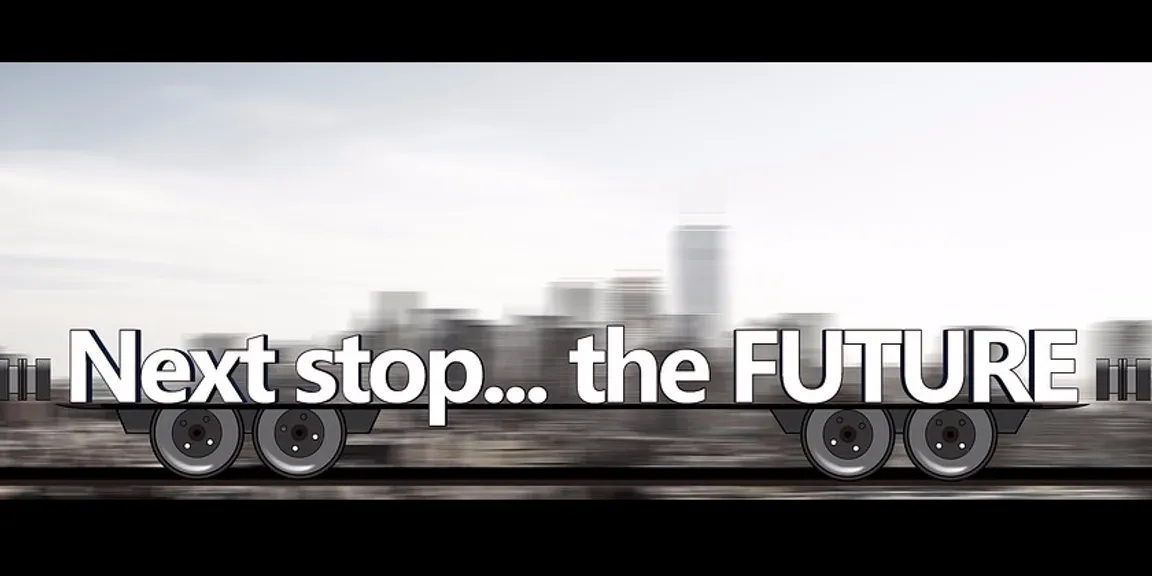

Customer Experience and Digital Transformation: A Match Made In Heaven?
Almost 85% of organizations worldwide concede that digital transformation holds the key to their success over the next five years. Strangely though, merely 3% have implemented it in entirety. Are you doing enough to become digitally empowered? What can you do more to keep customers at the heart of all your initiatives?

Surviving in today’s overcrowded digital economy is harder than ever before, given that organizations are facing competition from all angles. Having taken cognizance of the evolving landscape of a results-driven marketplace, they have embarked on an unpredictable yet inevitable journey towards Digital Transformation.
According to SAP’s recent study, almost 85% of organizations worldwide concede that digital transformation holds the key to their success over the next five years. Strangely though, merely 3% have implemented it in entirety.
A comparison between the Top 100 and the rest suggests the former is 59% more likely to include customer empowerment as a major trend, whereas others are happily focusing on the evolving pace of business change and competition (39% versus 23%).
Also, 70% of leaders have witnessed transformational value arising out of digital transformation efforts in terms of customer satisfaction.
Another research suggests 94% of brand managers feel that digital transformation has the ability to reinvent customer experience, but most of them are clueless as to where to start.
Do we see a pattern emerging here?
For most of these companies, which are ridden by legacy constraints and an inherently siloed business structure, the journey is far from pleasant. Against this backdrop, the message is loud and clear:
Customer experience reigns supreme.
It doesn’t matter how big or small your company is, or what industry you belong to. At the end of the day, creating and sustaining a flawless customer experience is what sets winners apart.
In fact, customer experience is the only differentiator that enables companies to capture vital business touch points amid the often chaotic process of business transformation.
Customer Experience Defined
Defining customer experience is not easy, given the different connotation it assumes across different organizational settings.
That said, Forrester Research explains it succinctly:
“How customers perceive their interactions with your company.”
This definition encapsulates the essence of customer experience by breaking down a very multifaceted paradigm, which encompasses emotional, psychological and virtual interactions, into a simplified concept.
Customers today are becoming smarter than ever before, and are no longer satisfied with archaic models of engagement. Not surprisingly, 57% of customer engagements today occur across multiple channels for days, signifying that they want to continuously engage with their service providers.
The need of the hour is to re-prioritize goals to retain a competitive edge over others. Using buzzwords like advanced analytics, machine learning, blockchain or artificial intelligence has little relevance, unless its real impact on customer experience is realized.
To that end, transformation-driven companies must depart from conventional approaches and redefine their strategy to do what matters most to them – drive business through untainted customer satisfaction.
Get Customer Obsessed
Oftentimes, one bad customer experience is all it takes to deter customers from doing business with the same company. In business terms, the impact has been known to be hugely significant - 20% of revenues or higher.
Enterprises that aim to keep customer experience at the left, right and center of whatever they do must learn the art of transcending customer expectations at every touch point. They would do well to take a cue from Amazon, which started off as an innocuous online retailer and has gone on to become the world’s biggest cloud service provider.
CEO Jeff Bezos attributes the company’s gargantuan success to its ‘customer obsession’ mindset. He observes,
“You can be competitor focused, you can be product focused, you can be technology focused, you can be business model focused. But in my view, obsessive customer focus is by far the most protective of vitality.”
It is this customer-focused mindset that organizations must willingly embrace in order to do what the laggards envision, but stop there.
“Be” Digital
“Doing” digital things and “being” digital are as different as the sky and earth. Practically any company can do things in isolation that can be technically defined as digital. However, not all such digital measures drive the desired outcomes.
Only those organizations that are focused on delivering unmatched customer experience and a non-siloed business model can claim to be digital. To this end, nearly 66% of industry-leading CEOs have made digital transformation their focal point. Companies are also recognizing the importance of shifting culture mindset and behavior that is oriented to the needs of their customers.
For example, a restaurant may unveil an app that lets customers place remote orders. However, since its menus and logistics are not in sync, the restaurant may be unable to fulfill its commitments, which may lead to delays and even cancellations – translating into customer dissatisfaction.
In such cases, the focus must remain on delivering a seamless experience, which can only happen when the entire team is on the same page about knowing what and how to go about things as a standard behavioral practice.
Transforming the Operating Model
Operational and process changes go hand in hand and are incomplete as a standalone approach. When digital disruption is enforced without making relevant changes within the operating model, even the best initiative cannot reach its potential – either in terms of improving customer experience or maximizing return on investments.
For example, a travel company that is unable to update its system and considers offline customers as its lifeline cannot hope to achieve its digital objectives, no matter how technologically-sound its website or how many products it showcases online. It needs to re-orient itself completely to be where its customers are.
The writing is on the wall: Companies must integrate end users as partners and include them across the full-spectrum journey of ideation, design and delivery. Apart from devising versatile processes that can reinvent based on customer preferences and changes in structural models, they must also accommodate cross-functional interaction to truly elevate customer experience.
Are you doing enough to become digitally empowered? What can you do more to keep customers at the heart of all your initiatives?





